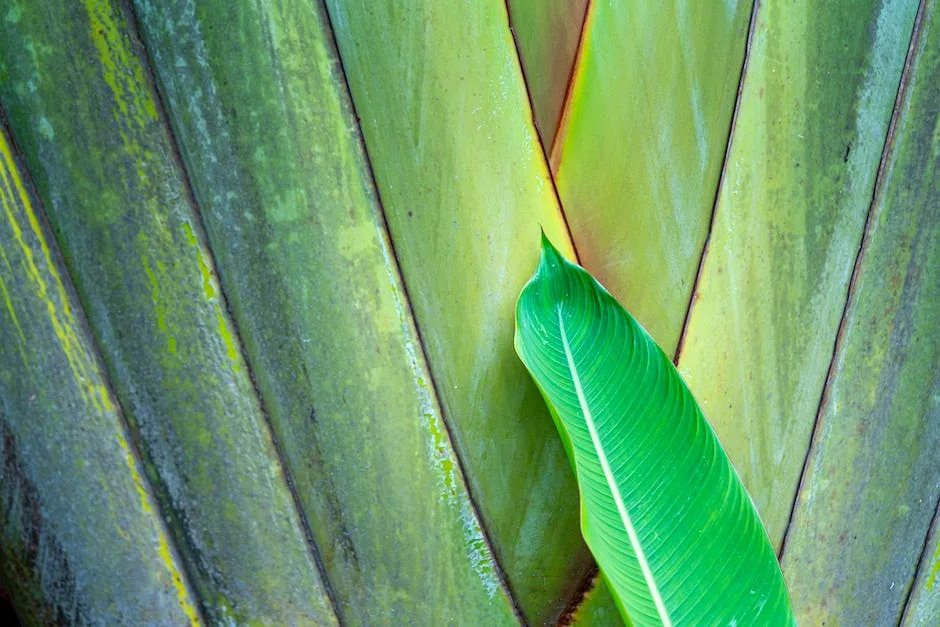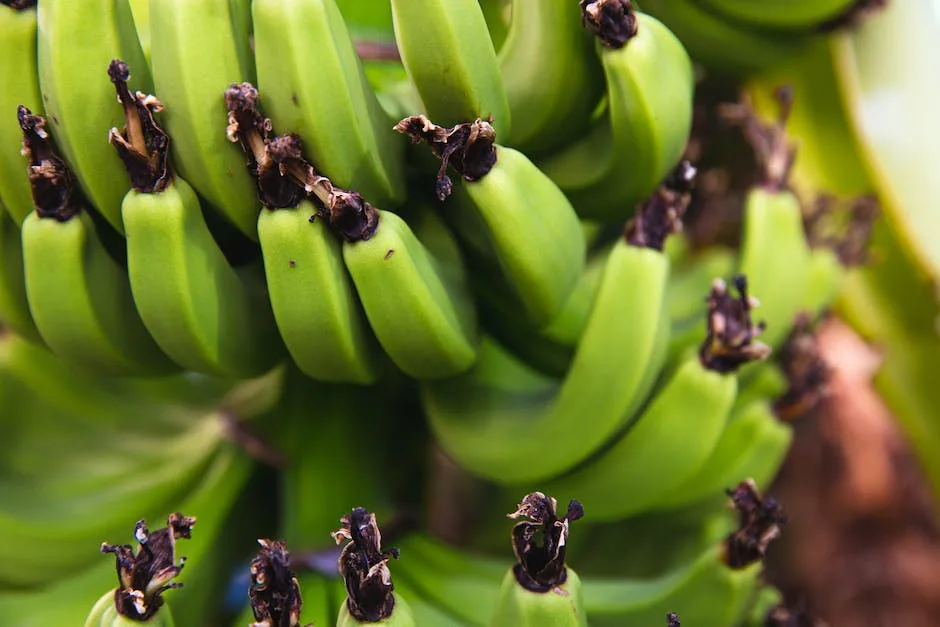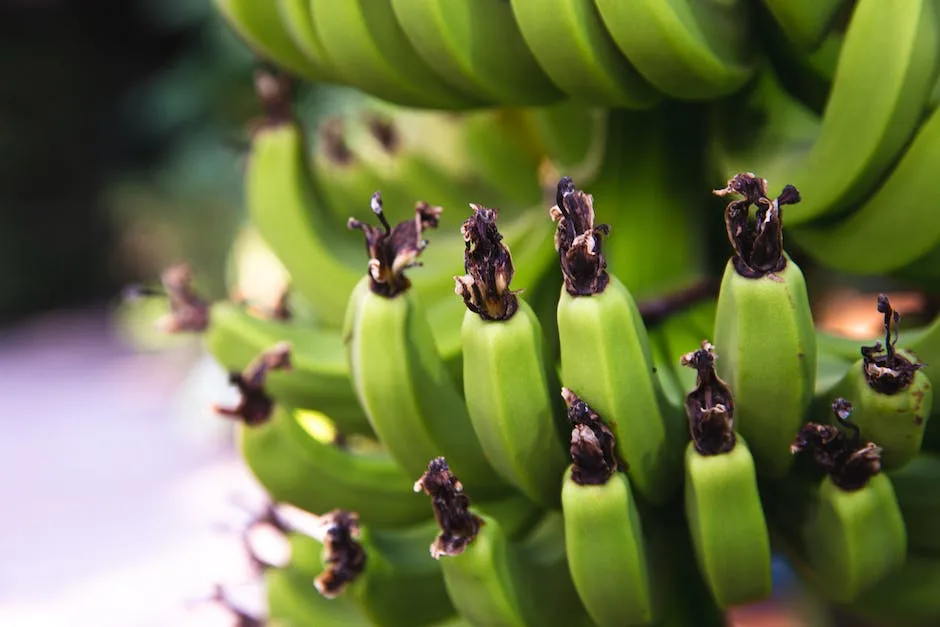There are many benefits to using banana peels on palm trees. Banana peels contain nitrogen and potassium, which are essential nutrients for palms. They also help to promote new growth and can help to keep palm trees disease-free. Additionally, banana peels act as a natural mulch and can help to retain moisture in the soil.
Banana peels are not only good for palm trees, but they are essential for their health and growth. Palm trees need potassium to grow and banana peels are an excellent source of this nutrient. In addition, banana peels act as a mulch, keeping the tree’s roots cool and moist.
Which plants benefit from banana peels?
Banana peels are a great way to add nutrients to your plants! Tomatoes, peppers, roses, staghorn ferns, and air plants all love banana peels. Just bury the peels a few inches around the plant and they’ll be happy as can be!
The practice of using banana water to fertilize plants is not supported by science or research and can actually harm your plants. While the intention may be good, using banana water as a fertilizer can do more harm than good.
Is it okay to put a banana peel in a plant
Banana peels are a great way to add nutrients to your garden. Simply place them on top of the soil or around the base of your plants and they will release nutrients as they decompose. This is a great way to feed your plants without using synthetic fertilizers.
This is a great way to fertilize your plants with minimal effort! Simply cut up some banana peels and place them in a large bowl or tub, then cover with water. Allow the peels to soak for 2-3 days so the minerals can extract, then use the water as is for your plants. There’s no need to dilute it. Just be sure to “burp” your bottles occasionally, as the fermentation process may cause them to swell slightly.
What are the disadvantages of banana peel?
Pesticide exposure has been linked to several adverse effects on health and may increase the risk of conditions like autism, cancer, high blood pressure, diabetes, and dementia. While this is not much of a concern if you’re only eating the fruit, it may be something to consider when consuming the peel.
Banana peels are a great way to add nutrients to your soil. They contain potassium, phosphorus, magnesium and calcium, which are all essential for plant growth. Soaking the banana peels in water allows the nutrients to leech into the water, and once it hits the soil, the roots grab all those sweet, sweet minerals.
How often should I water my plants with banana water?
Composting banana peels is an excellent way to fertilize your plants. buried in the soil, they will release nutrients that will help your plants to grow. You can also dilute the banana peel liquid fertilizer and water your plants with it once a week.
A new palm should be watered every day during its first week. During the second week, water every other day. During the third week, water three times per week. After the third week, water as normal for established plants.
How do you use banana peels as fertilizer
Banana peels are a great way to keep pests away from your plants! Simply cut up the peels into small pieces and bury them beneath the soil. The smaller the pieces, the better they will decompose. This will help to keep your plants healthy and pest-free!
Your trash can attract animals and override their natural wariness of humans. This can lead to overcrowding and even human-animal conflicts when an animal begs for food. Please be mindful of your trash and dispose of it properly to avoid negative impacts on wildlife.
How effective is banana peel as fertilizer?
Banana peels are a great natural fertilizer for your garden. They decompose quickly, providing rich stores of nutrients to the soil, including magnesium, calcium, phosphorus, sulfur, potassium, and sodium.
There are many ways to use leftover banana peels. You can compost them, use them as fertilizer for plants, or even use them to clean house plants. You can also use them to polish shoes or silver. And, if you have sensitive skin, you can even use them as a skin ointment.
How do you save banana peels for fertilizer
Using a banana peel to create a fertilizer is a great way to add nutrients to your plants. Simply add a banana peel to a clean jar, fill the jar with water and put the lid on it. Let the concoction sit for a week or two, then remove and discard the banana peel. Dilute the finished fertilizer with water in a 1:4 ratio and enjoy happy plants and bigger yields.
Bananas and banana peels are high in potassium, but they aren’t particularly loaded in nitrogen and all the other nutrients that plants need to grow. If the peels aren’t high in a variety of nutrients, they won’t provide those nutrients to plants. The best way to use banana peels in the garden is to compost them first so that they break down and release their nutrients over time.
How do you dry banana peels for fertilizer?
Dried banana fertilizer is a great way to add nutrients to your soil. Bananas are high in potassium and other essential nutrients that plants need to thrive. To make dried banana fertilizer, simply dry out your banana peels and then add them to your soil. You can dry them in the sun or in a dehydrator, but make sure they are completely dry before adding them to your soil.
A banana peel can be dangerous because it can cause you to slip and fall. The reason it is dangerous is because it makes the surface smooth, which decreases the friction between your feet and the ground. When friction decreases, it leads to slipping, which can cause you to fall when you step on a banana peel.
How long does it take for a banana peel to decompose
Banana peels are not the most environmentally friendly item, as they can take up to 2 years to biodegrade. If you have bananas that you don’t plan on eating, try composting the peels instead of throwing them away.
While burying a banana peel in your potting soil will add more nutrients than the soaking method, the peels will break down so slowly that they likely won’t provide an adequate amount of nutrients when your plants need them.
Does banana peel water attract bugs
This is a great idea! I had no idea that banana peels were a natural insect repellent. I will definitely be trying this.
Many people are unaware that banana peel tea exists, but it is actually a very popular beverage in many parts of the world. Not only is it delicious, but it also has several health benefits. One of these benefits is that it can help to lower blood pressure. This is because banana peels are rich in potassium, which is a key nutrient for maintaining healthy blood pressure levels. If you suffer from high blood pressure, then drinking banana peel tea on a regular basis could help to reduce your blood pressure numbers.
How do you add banana peels to soil
Banana peels are high in potassium and can give your plants a boost. They also contain nitrogen and phosphorus, which are essential for plant growth. Chop the peels into 1/4 inch pieces and add them to your garden’s soil. You can also dry the peels and grind them into a fertilizer.
Banana peels are a great way to add some freshness to your bowl! Cut them into small pieces and add them in for a boost of flavor. Not only will they taste great, but they’ll also add some extra nutrients to your bowl.
What does onion peel do for plants
Onion peel can be a great source of nutrients for your plants. The potassium, calcium and iron in the peel can help your plants grow strong and healthy. Just be sure to compost the peel properly before using it on your plants.
Mature palms in the landscape should be fertilized with 8-2-12 fertilizer to ensure they are receiving all the essential nutrients they need. This fertilizer is complete, granular, and specially formulated for palms. It contains manganese, which is a mineral that helps prevent yellowing and necrosis between the leaf veins, and also helps reduce leaf size.
Should I spray my palm with water
It’s important to provide your palm tree with the right amount of water, depending on the season. In spring and summer, water often, but less in autumn and winter. When the weather is dry and hot, mist spray the foliage several times a day. This will keep it cool and also help deter pests.
If you love your palm trees, overwatering them is probably one of the worst things you can do. Too much water can damage the roots and eventually kill the tree. A soil wetness meter can help you avoid overwatering by checking the moisture level of the soil. You can also stick your finger into the soil to check the moisture level. If the first 2 inches are dry, it is typically time to water.
Do banana peels repel insects
This is a great homemade bug repellent that is both cheap and easy to make! Simply puncture some holes in the top of a plastic bucket, and place a banana peel inside. The sweet scent of the banana will attract small bugs, which will then fly into the bucket and be trapped. This is an effective way to keep insects away from your dinner table!
Banana peels are often used as fertilizer, but their nutrient content is low compared to regular fertilizer. They are mostly composed of water, so they do not provide a lot of nutrients for plants.
Conclusion
Banana peels are not particularly good for palm trees, but they will not harm the trees either. The peels can actually be beneficial for other plants in the same area.
Banana peels are a great natural fertilizer for palm trees. They are high in potassium and other nutrients that palm trees need. If you have a palm tree that is not doing well, you should try feeding it banana peels.
I’ve always been drawn to trees.
As a kid, I spent most of my free time outside, climbing, exploring, and trying to figure out the names of the trees around me.
That early curiosity eventually led me to study arboriculture and horticulture at Michigan State.
Later, I completed a degree in forestry at the University of Michigan.
I’ve been working in tree care and education ever since.
These days, I enjoy helping people learn more about the trees in their own backyards.
How they grow, how to care for them, and why they matter.
You don’t need to be an expert to appreciate trees.
A little curiosity goes a long way.
